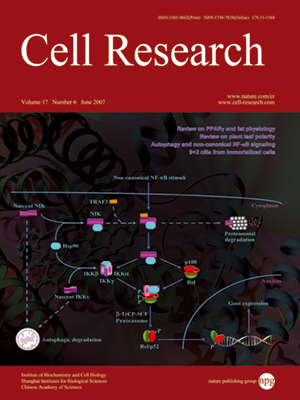
Volume 17, No 6, Jun 2007
ISSN: 1001-0602
EISSN: 1748-7838 2018
impact factor 17.848*
(Clarivate Analytics, 2019)
Volume 17 Issue 6, June 2007: 486-511
REVIEWS
Fat poetry: a kingdom for PPARγ
Silvia I Anghel1 and Walter Wahli1
1Center for Integrative Genomics, National Research Center Frontiers in Genetics, University of Lausanne, Lausanne CH-1015, Switzerland
Correspondence: Walter Wahli(walter.wahli@unil.ch)
Adipose tissue is not an inert cell mass contributing only to the storage of fat, but a sophisticated ensemble of cellular components with highly specialized and complex functions. In addition to managing the most important energy reserve of the body, it secretes a multitude of soluble proteins called adipokines, which have beneficial or, alternatively, deleterious effects on the homeostasis of the whole body. The expression of these adipokines is an integrated response to various signals received from many organs, which depends heavily on the integrity and physiological status of the adipose tissue. One of the main regulators of gene expression in fat is the transcription factor peroxisome proliferator-activated receptor γ (PPARγ), which is a fatty acid- and eicosanoid-dependent nuclear receptor that plays key roles in the development and maintenance of the adipose tissue. Furthermore, synthetic PPARγ agonists are therapeutic agents used in the treatment of type 2 diabetes.
This review discusses recent knowledge on the link between fat physiology and metabolic diseases, and the roles of PPARγ in this interplay via the regulation of lipid and glucose metabolism. Finally, we assess the putative benefits of targeting this nuclear receptor with still-to-be-identified highly selective PPARγ modulators.
Cell Research (2007) 17:486-511. doi: 10.1038/cr.2007.48; published online 12 June 2007
FULL TEXT | PDF
Browse 1881


